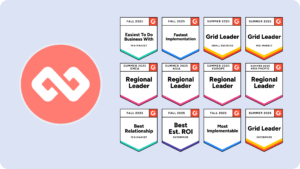In recent years, there has been a growing emphasis on diversity and inclusivity in the workplace. While most employers are now making efforts to increase the representation of marginalized groups based on race, gender, and sexual orientation, age is often overlooked as a crucial factor in creating an inclusive workplace. Here, we explore the impact of age diversity on the workplace and the common misconceptions associated with different age groups.
Debunking Common Misconceptions About Age
Starting with the basics, we need to dispel some of the most common age-related myths that persist even in modern workplaces. The following misconceptions are often used to discriminate against older employees and limit their career opportunities:
The Truth About Aging and Memory
Contrary to popular belief, memory and learning abilities do not necessarily decline with age. While it is true that some cognitive functions may decline as we age, such as processing speed and working memory, research has shown that older adults are just as capable of learning new skills as their younger counterparts. In fact, older workers often bring a wealth of experience and knowledge that can be invaluable in certain industries.
One study conducted by the Center for Vital Longevity at the University of Texas at Dallas found that older adults were able to improve their memory performance through cognitive training programs. The study also found that older adults who engaged in regular physical exercise had better memory performance than those who did not exercise regularly.
It’s important to note that while some cognitive functions may decline with age, others may actually improve. For example, older adults have been found to have better emotional regulation and decision-making abilities than younger adults–an underrated soft skill that can be passed down between mentor and mentee.
The Impact of Age Stereotypes on Our Health
Age stereotypes can be harmful to our physical and mental health. When we internalize negative beliefs about aging, we may experience higher levels of stress and anxiety, which can lead to chronic health conditions such as heart disease and depression.
Research has shown that older adults who hold positive attitudes towards aging have better physical and mental health outcomes than those who hold negative attitudes. In fact, a study conducted by the Yale School of Public Health found that older adults who held positive beliefs about aging lived an average of 7.5 years longer than those who held negative beliefs.
It’s important to challenge these stereotypes and promote positive attitudes towards aging to improve overall well-being and happiness. This can be done through education and awareness campaigns, as well as by encouraging intergenerational interactions and relationships.
Older workers bring valuable skills, knowledge, and experience to the table, and age stereotypes can have harmful effects on our physical and mental health. By challenging these misconceptions and promoting positive attitudes toward aging, we can create a more inclusive and supportive society for people of all ages.

The Negative Effects of Age Stereotypes in the Workplace
Unfortunately, age discrimination is still prevalent in many workplaces, and the negative effects can be far-reaching. Older workers may be passed over for promotions or given less challenging tasks, which can lead to disengagement and decreased productivity. Additionally, younger employees may feel resentful toward older colleagues based on unfounded assumptions about their abilities.
How Ageism Affects Employee Morale and Productivity
Like all discrimination, studies have shown that age discrimination can have a significantly negative impact on employee morale and productivity. When workers feel like they are being unfairly judged based on their age, they may become disengaged and lose motivation. This can lead to decreased job satisfaction and a higher turnover rate, which can be costly for employers in the long run.
The Cost of Age Discrimination in the Workplace
Age discrimination not only affects individual employees but has a broader impact on the economy as a whole. In the United States, age discrimination costs the economy up to $850 billion in lost productivity annually. Addressing this issue can not only improve the experience of individual employees but has the potential to boost the overall productivity of the workforce.
Strategies for Creating an Age-Inclusive Workplace
Creating an age-inclusive workplace is not just about avoiding age discrimination; it’s about recognizing and valuing the unique contributions of employees of all ages–and creating an environment of belonging. Here are a few strategies that can help to promote age diversity in the workplace:
The Importance of Diverse Age Representation in Leadership
Leadership roles should be filled by a diverse range of employees, including those of different ages. This can help to promote a greater understanding of the needs and perspectives of different age groups and can lead to more effective decision-making.
Providing Training and Development Opportunities for All Ages
Employers should ensure that training and development opportunities are available to employees of all ages, not just younger workers. This can help to address any skills gaps and ensure that older workers feel valued and engaged.
Provide Mentoring Opportunities to Everyone
Mentoring is a great way to connect your teams and encourage skills and knowledge to be shared among everyone. And while traditional mentoring, where more senior employees mentor juniors, is great, a couple of great ways to incorporate mentoring into your age-inclusivity strategy are reverse mentoring or peer mentoring. These lesser-known mentoring formats allow your more senior team members to enjoy a different type of learning and development on top of the more traditional benefits of mentoring. It also helps keep them engaged with the rest of your teams and with the organization itself.

How Managers Can Combat Ageism in the Workplace
As leaders in the workplace, managers have a crucial role to play in combating ageism and promoting a diverse and inclusive environment. Here are a few strategies that managers can employ to create an age-inclusive workplace:
Encouraging Intergenerational Collaboration and Mentorship
Managers should encourage collaboration between employees of different ages, as this can lead to shared learning and a better understanding of different perspectives. Mentorship programs can also be a great way to promote intergenerational learning and build stronger relationships between employees of different ages.
Addressing Age Stereotypes and Biases in Performance Evaluations
Performance evaluations should be free from age-related biases and stereotypes. Managers should take steps to ensure that older workers are evaluated based on their actual performance rather than their perceived age-related limitations.
The Benefits of Embracing a Multi-Generational Workforce
Finally, it’s important to recognize the many benefits of building a multi-generational workforce:
The Advantages of Combining Experience and Innovation
By combining the experience of older workers with the fresh ideas of younger colleagues, companies can create a more innovative and dynamic workplace culture. This can lead to new products, processes, and business models that can drive growth and success.
How Age Diversity Can Improve Company Culture and Creativity
A diverse workforce that includes employees of different ages can lead to more inclusive company culture and improved creativity. When workers feel valued and included, they are more likely to share their ideas and perspectives, which can lead to new and innovative solutions.
Conclusion
Age diversity is an important factor in creating an inclusive and effective workplace. By combatting ageism and promoting intergenerational collaboration, employers can build a more diverse and productive workforce. Embracing the unique contributions of employees of all ages can lead to better decision-making, improved creativity, and more successful business outcomes.




